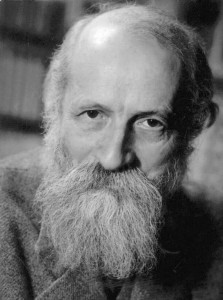Soul Food series (part six)
“Peacemaking”
Small group devotion
The purpose of this discussion is for your group to consider how they can participate in Christ’s way of Peace in their lives. The intention is to help the group realise that peace-making is an active thing, not a passive thing. Nor is it optional — it is central to the way of Christ.
It is ironic that when you google “peacemaker”, this is the first thing that shows up:
 Use this image as a starting point for discussion. What is peacemaking? How does our world often understand peacemaking? Is violence OK if it’s in the name of “making peace”?
Use this image as a starting point for discussion. What is peacemaking? How does our world often understand peacemaking? Is violence OK if it’s in the name of “making peace”?
Read Luke 19:28-40
 How does this passage give a different picture of what it means to bring peace?
How does this passage give a different picture of what it means to bring peace?
Are you challenged by this? Why or why not?
Read this quote from Martin Buber: “if there were a devil it would not be one who decided against God, but one who, in eternity, came to no decision” (Martin Buber, I and Thou, 52). What do you think he means by this?
Given Buber’s quote, and given the fact that Jesus is on his way to the cross — what does this suggest about the nature of peacemaking?
Living in such a peaceful society, it’s easy to think of peace-making as a fringe issue. In what ways can we be bringers of peace into our lives, our society, our country? (If conversation is slow, the leader might like to introduce some of the following:
- Peacemaking in one’s personal life (e.g. fights with friends and family etc.)
- Māori and Pākehā relations
- Climate change and environmental care
- The Christchurch earthquakes (cf. Luke 19:40!)
- The refugee crisis
- Cultural violence (e.g. toward minority cultures, immigrants etc.)
Read this vision of peace in Revelation 21:1-4. What does God’s peace look like?
What does it mean that as Christians we live in light of that?
Leader’s notes:
1. Verse 40 is really interesting. Luke doesn’t mention the traditional palm branches, but he does mention stones crying out. Firstly Luke has a cosmic, big view of Christ. Jesus is the bringer of peace, not only to Jerusalem, or the Jews, or even to humanity — he is bringing about a new heaven and a new earth.
2. The stones themselves are a powerful image: they evoke thought of the Temple which would be destroyed, as well as the stones of the road which have been stained with blood and tears over years of conflict and war etc. The stones witness to the years of human destruction. Jesus brings an end to that.
3. Importantly, the way of peace is not passive (i.e. simply not being violent). Jesus actively walks the path to the cross. He knowingly journeys towards his death. This is the way of Christ, and the way of the Christian too. Martin Buber’s quote suggests that inaction is worse than causing actual evil — whether or not he’s right, the point is clear: sitting back and watching from afar is not peacemaking.
4. Regarding Buber’s quote, here are some examples that might shed some light:
- Peter’s denial of Christ wasn’t malicious or desiring to see Christ suffer, but his denial came out of fear and an inability to act for this way of peace.
- Buber wrote as a Jew in post-holocaust Europe. Hitler caused untold evil. But Hitler could only bring about this evil because of the countless millions who turned a blind eye, or supported the Nazi regime out of fear for their lives.
- Climate change is fuelled by indifference and unwillingness to change our lifestyles. We may point the finger at large oil companies, and we may agree that something has to change. But if we are unwilling to change our own lifestyles, we are just fuelling the demand for continued abuse of our world.
- Broadly speaking, peace-making is about inaugurating God’s reality. This is more than just non-violence. This is about right relationship between God, humanity, and the world — things as they should be. Unequal distribution of wealth, environmental abuse, cultural violence — these are all arenas for peacemaking to take place.
